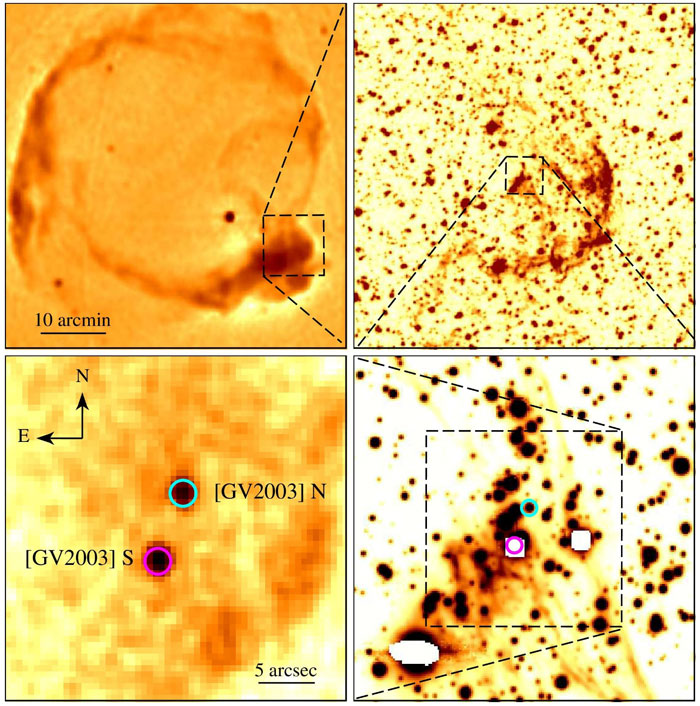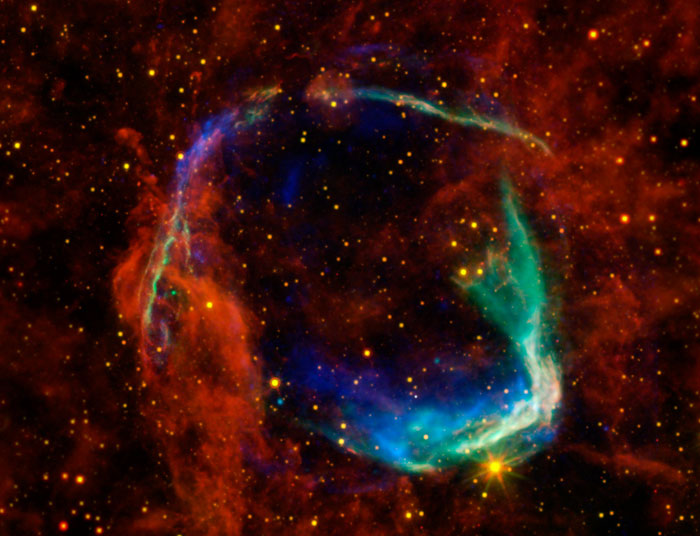Astronomers discover a rare star full of calcium, but no clear originWeird.PETER DOCKRILL 2 MAY 2017
http://www.sciencealert.com/astrophysicists-have-discovered-a-mysterious-star-polluted-by-calcium Vasilii Gvaramadze
Vasilii GvaramadzeNearly 2,000 years ago, the first human-documented supernova was observed by ancient Chinese astronomers, who
witnessed a bright "guest star" lighting up the night sky in 185 AD.
A couple of millennia later, scientists have proposed various explanations for what gave rise to the supernova remnant RCW 86, but now a team of astrophysicists think they've pinned it down: the supernova was caused by one half of an exploding binary star system, which blasted its stellar partner with a flood of heavy elements, including calcium.
 X-ray: NASA/CXC/SAO & ESA; Infrared: NASA/JPL-Caltech/B. Williams (NCSU)
X-ray: NASA/CXC/SAO & ESA; Infrared: NASA/JPL-Caltech/B. Williams (NCSU)...
The observations introduced another puzzle. While the light shone by the star indicated it was a G-type star like our Sun, it also seemed to produce too many X-rays for a G-type.
The logical conclusion? We weren't looking at one star, after all.
"{S}ince the X-ray luminosity of the G star should be significantly less than [w]hat was measured for [GV2003] N, we have come to a conclusion that it is a binary system composed of a neutron star (visible in X-rays as [GV2003] N) and a G star, visible in optical wavelengths," says Gvaramadze.
This means the supernova could have been a dramatic stage in the evolution of this binary system, in which one of the stars exploded in a supernova event, polluting its companion with a range of heavy elements – and leaving its atmosphere with six times as much calcium as it should otherwise have.
To verify their hypothesis, the team checked observation data taken with the ESO's Very Large Telescope in Chile. The measurements confirmed [GV2003] N's was a binary system, with the two stars orbiting one another about once per month.
...
Excerpt. Read more at
http://www.sciencealert.com/astrophysicists-have-discovered-a-mysterious-star-polluted-by-calcium